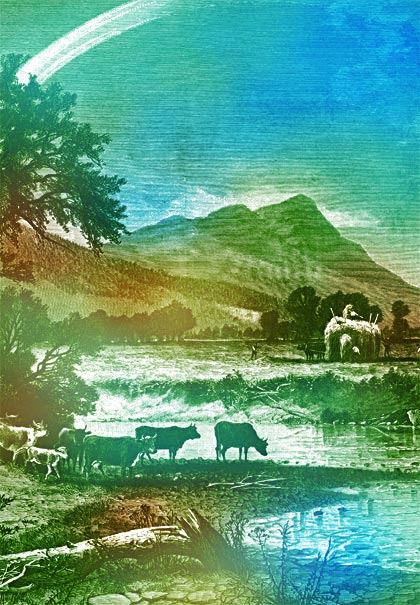CONSTONIA
A Wellspring of Bounty in the Jungle
Such an ambitious project as a utopian colony on the southern continent, Antarctica, required an immense amount of planning, preparation, and resources. Nadiria was generated primarily from organizations based in New York and Savannah, GA but they were too far-flung to be a practical resource for the colony. A solution had to be found. That solution was Constonia, an immense plantation in the jungles of southern Argentina between what is now Santa Cruz and Puerto Deseado. Named after Constance Brundt, Constonia became a thriving colony in and of itself. The primary purpose of the plantation was to mount resupply expeditions to Nadiria every year. It therefore had to have docks for a small fleet of ships, giant warehouses to stockpile provisions, and agricultural resources to generate many of the needed provisions.
Constonia was built to be a staging camp for the colonists as well as a stable economic resource for Nadiria. Thus, it was very prosperous and long outlived the colony it was created to support. Constonia had a large agricultural base, including sheep, chicken, pig, and cattle husbandry, as well as cotton, rice, corn, wheat, and timber. At its peak, Constonia had over two hundred residents working the plantation. Not only did the workers tend the crops and the animals, but they also spun wool and fabrics, making many of the clothes, linens, and blankets |

|
needed by the Colony. The carpentry shops were also busy making all kinds of furniture, barrels, crates, doors, and chests to keep the new colony expanding. The foundry made such necessities as chains, hinges, pulleys, axels, locks, keys, and various iron tools. With its surplus goods, they traded for many other products such as minerals, salt, paper, paraffin, oils, spices, and much more.
The unique thing about Constonia was that it was a mirror of Nadiria, with many independent groups and entities functioning within the plantation. This made Constonia a virtual city with separate farmers, weavers, carpenters, lumberjacks, traders, and warehousers all working for the common commercial prosperity. The Brundt's wanted to keep Nadiria pure, and thus insisted that Constonia have the same moral and philosophical ideals as the colony itself. The Church of Spiritual Commerce was the governing body of the growing city, encouraging internal trade and commerce, and soon a whole economic and spiritual ecology was born. The corporate entities in Constonia were usually owned or co-owned by Nadirians, and were also traded in the Antarctica Stock Exchange, thus intertwining the economic fates of the two communities. The annual shipments to the colony were often called "dividends" to the shareholders in Nadiria.
Strong ties with America were preserved, however, for the benefit of the Colony. There were many things that simply had to come from "up north", which included complex tools, printing presses and replacement parts, engraving plates and supplies, inks, and most importantly, Heaven's Fire chemicals. The one that kept the colony alive was Heaven's Fire, invented by Gaston Montpelier, and the formula had to remain a carefully guarded secret. Thus, the chemicals arrived in separate shipments and in coded barrels, so the exact ingredients were a mystery. Additionally, new colonists were constantly being recruited, not only for the increase of the colony's population, but also to bring in new wealth and resources. It was Samuel's strict rule that all colonists "bought in" to the colony by purchasing shares in Nadiria, ensuring financial prosperity of the colony as a whole. These colonists stayed for a while in Constonia, mainly to wait for the next resupply expedition which was once every two years in January, when the ice floes were at their smallest.
After the disappearance of the Nadiria colonists, Constonia was plunged into turmoil. Nadiria was the guiding light and force of the plantation, and without it, the community was lost. The leaders of the plantation kept it going for several more years, trading its produce with local villages and communities as well as with America. After a while, though, most Constonians returned to the United States to pick up the pieces of the lives they abandoned to join the Church. Constonia devolved into just another large plantation owned by a rugged few who wanted to keep the dream alive, and probably still exists in the jungles of Argentina to this day. |